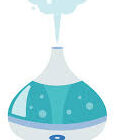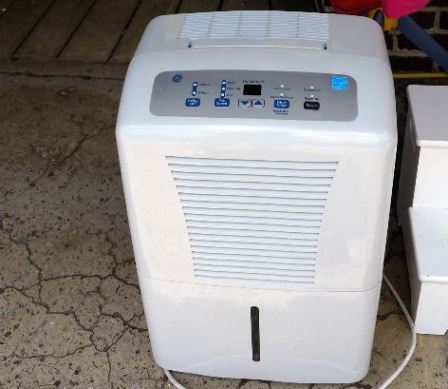Why Does My Dehumidifier Turn Off After A Few Minutes? 13 Main Causes
If your dehumidifier stops running after a few minutes, your indoor humidity level will be super uncomfortable.
These units are designed to suck the damp air, remove the moisture by condensing it over the dehumidifier coils and then blow the dry air back into the room.
But appliances do not always work as planned. If the dehumidifier turns off by itself after some minutes without dehumidifying the air, there is cause for alarm.
This is a common problem, as shared by other people who own portable dehumidifiers for the basement and other indoor spaces.
So, why does my dehumidifier keep shutting off? The likely culprits could be the humidity sensor that is reading the humidity wrong, the humidistat failing, or leaked refrigerant fluid. If you enter the wrong controls such that the dehumidifier reads the bucket as full when it isn’t, it won’t stay running.
Luckily, it is not too hard to diagnose the common issues with dehumidifiers, as we have seen in the past on this blog. We have looked at why dehumidifiers blow cold air where they are supposed to blow warm air.
We have also seen why a dehumidifier blows too hot air, and the faults that could cause that.
Today, we’ll look at the problem of dehumidifiers that keep stopping, even when the humidity level is set lower than what is already in the room.
13 reasons: dehumidifier stops running after a few minutes
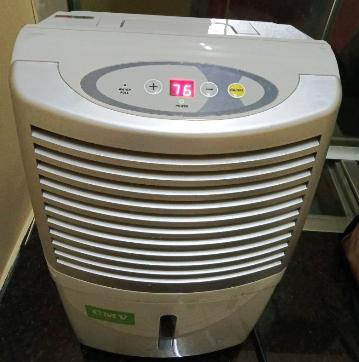
Before you write off your dehumidifier, it is best to try the checks we will recommend here. Sometimes, it is just something minor that you might even be able to fix yourself.
Here are the most vital checks to perform in a dehumidifier that keeps going off:
1. Start simple: Ensure bucket is not full
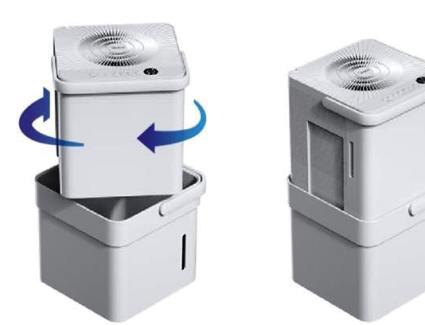
Start with the simplest checks, and one of them is to make sure that the dehumidifier bucket is not full.
If you have a small dehumidifier and high humidity, the bucket might fill up faster than you anticipated.
When you switch it on, it will run for seconds or minutes before shutting down again. Modern dehumidifiers have auto shut off, so this can happen a lot.
What if you have a dehumidifier with a drainpipe and perhaps even a pump? Well, you should check that the drain line is not clogged anywhere.
You can even disconnect and blow through it. If there is resistance, there is a blockage somewhere.
Solution: Remove and empty the dehumidifier bucket. Also, ensure the drain hose is not blocked. Clean the bucket before returning it. You can clean it with white vinegar to kill mold.
2. The dehumidifier filter is clogged

Unlike the humidifier which just releases tiny droplets of water as mist to your indoor air, the dehumidifier works almost the same as an air purifier.
It pulls the damp air in, passes it through filters that capture mold, mildew, bacteria and other pollutants.
The air then passes over the coils which condensate the water. The dry and warm air blows back into the room.
The dehumidifier filter does a lot of work. With time though, it collects a lot of dirt. It can become clogged up easily.
If that happens, it will make your Danby dehumidifier to keep shutting off when you least expect it.
Solution: If you use your dehumidifier often, you must clean it often. Remove it, blow it with cool air to remove dust and then clean it with soapy water. Rinse thoroughly and let it air-dry completely before re-installing it.
3. The electrics are spoiled
There is a lot of wiring in a dehumidifier, from the compressor circuit board, the fan, to the cord that goes into the wall plug and so on. If any of these is spoiled, your unit is not going to work correctly.
Unfortunately, unless you know your way through appliance wiring, you might not be able to fix this.
Solution: If you check the bucket and drain hose, the fan and other things and you suspect that the electrical system is bad, take the humidifier to an electronic repair shop.
They will test the electric system for you.
4. Overload switch on compressor switches itself off
Your dehumidifier’s compressor has a fail-safe feature in the name of the compressor overload switch.
Many things could cause the compressor overload. Frost is one of them. Failure in the wiring is the second one.
A fault in another part of the dehumidifier could cause the compressor to work harder than it should. This causes it to start heating up and in return, it switches off to prevent damage.
Solution: The compressor is not going to switch itself on again automatically when the conditions are right. You will need to find its location on the user manual to switch it on again.
5. The humidity sensor has failed
Most of the time, when the humidity sensor in a dehumidifier fails, the unit will keep shutting off. If this is the case, you will need to change the sensor and install a new one.
In modern dehumidifiers such as the Frigidaire basement dehumidifier, the sensor checks the level of relative humidity.
If the RH level is higher than set, the sensor will send this information to the control board, which will then “order” the fans to start working and draw in the moist air.
If the sensor fails, the dehumidifier will not work because there is no proper information relay to the control board.
Also, if a dehumidifier has a thermistor, that too can fail, so it is good to do a diagnosis before you assume it is the sensor to blame.
Solution: In case the sensor is failed, you can try to change it by following the instructions in the video below:
6. The dehumidifier fan is not working
Dehumidifiers have suction fans, which draws air into the appliance. Sometimes the fan gets dirty and it can become clogged with debris, hindering how it works.
Fan blades also break, and this prevents the fan from working properly.
For the dehumidifier to run correctly, it needs to pull in the moist air. If it is not drawing in the air, it is not going to keep running since it has nothing to do. What we are saying is that a broken blade stalls the unit.
Sometimes, the fan motor could be in need of replacement. If this happens, check with the manufacturer of the dehumidifier to order the motor and fan if it is broken.
You can also take the dehumidifier to a local repair shop, or ship it back to the manufacturer if it is still under warranty.
Solution: Unplug the dehumidifier cover, and check the fan. If there is no physical defect, try turning the fan by hand. It should turn freely. If there is resistance, it means it is blocked and needs to be cleaned.
7. Your indoor air is too cold – below 65°F
In another article, we saw the relationship between humidity and temperature. In the case of a dehumidifier, too cold air is going to cause the liquid on the coils to start freezing.
Once the dehumidifier starts sucking the air with moisture, it will pass it over the condenser coils, where, as suggested, condensation is going to occur. The water will drip into the collection pan and the now dry air flows back to the room.
If the moisture drawn from the air turns to frost on the condenser coils, this unit is simply not going to work.
Luckily, you just need to let it thaw so that it can start working again. To do that, just switch it off, unplug it and give it a couple of hours to defrost.
Solution: Raise the indoor air temperature to 65 degrees Fahrenheit or higher, so that your humidifier and dehumidifier can work correctly.
8. The dehumidifier needs resetting
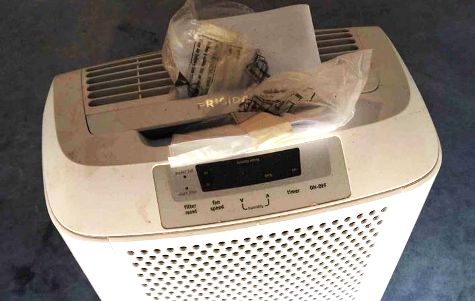
When you enter your settings in the control panel, they are stored so that the appliance can use them in future to start or switch off. To get the unit to run without stopping, sometimes, all you need is to reset it.
Check whether your model has a reset button. You can use that to get it back to factory settings and re-enter your humidity settings.
If it does not have this button, just unplug it from power, let it stay for some minutes and then plug it back in. This should do the reset.
This can solve some simple problems, but it won’t help if the compressor has a problem, there are wiring issues or the fan is not working.
9. It’s too large for the space
Although rarely, this can still happen, when you use a big dehumidifier for a small space. For instance, a dehumidifier that’s rated for 1500 square feet can work super fast in a 250 square feet space.
Thus, it would be possible for it to switch off after a few minutes, having lowered the humidity to desired level.
Solution: Always buy a dehumidifier with the correct space rating. Bigger might sound better, but with the wrong settings, it can make the air too dry.
10. Dehumidifier stops running after a few minutes: leaked refrigerant
The dehumidifier refrigerant liquid changes state from gaseous to liquid and back but it does not become depleted.
A refrigerant dehumidifier has the condenser coils, an evaporator pad or filter, a compressor, capillary tube and of course, the water bucket.
The refrigerant fluid is not supposed to run out, ever! By design, the dehumidifier should stay with the refrigerant fluid (mostly Freon) it came with for its entire lifespan.
However, anything that can go wrong will always go wrong! This is why every year, there are so many cases of dehumidifiers leaking Freon. If this happens, depending on the model, a few things can happen:
- The dehumidifier can keep going off
- The dehumidifier might run continuously but it will not lower humidity
A dehumidifier is always in contact with moist air, so some metal parts are likely to corrode with time. If this happens, Freon could start leaking.
Sometimes, the seals in the compressor will spoil, especially with age; pipes could burst and so on. These wear and tear symptoms could lead to the leaking of the dehumidifier refrigerant.
Solution: If your unit is under warranty, contact the vendor who sold it or the manufacturer so that they can replace it, or repair and recharge the refrigerant. In some models, it is possible to recharge with new Freon fluid and in others it is not possible.
11. Dehumidifier keeps shutting off – Problem with the controls

For your dehumidifier to work correctly, you need to enter the right settings in the control panel. If it is your first time to use a unit, you might enter the wrong settings unknowingly.
First, you want to set the humidity level that you want. For instance, 70 percent humidity is too high. Therefore, you need to set the desired humidity level as 50 or 45 percent. Once the dehumidifier lowers the indoor air moisture to that level, it stops working.
If you unknowingly enter the wrong settings, the dehumidifier might shut down sooner, without lowering the humidity to the right levels.
You might also set the humidity level just fine. However, if you do not set the right fan speed, the dehumidifier might not work properly.
Solution: Set a dehumidifier properly
First, plug the dehumidifier to the electricity outlet, using its power plug. If it does not turn on automatically, find the On/Off button and press it to switch it on.
Secondly, find a button indicating humidity level or dryness level, or other similar wording. You need to turn the dial to the left or right to increase dryness level or humidity level.
Press the button for humidity level several times to get to the humidity level that you want to set for your indoor space.
Thirdly, find the button for setting the fan speed. You can use it to increase or decrease fan speed. Low fan speed is less noisy, lower and it will lower the humidity slowly. Medium and high fan speeds are fast workers but they are noisier.
Fourthly, set the timer. There is a button for the time, where you can set the time when you want the dehumidifier to go on.
12. Grease on the grille – LG dehumidifier shuts off after a few minutes
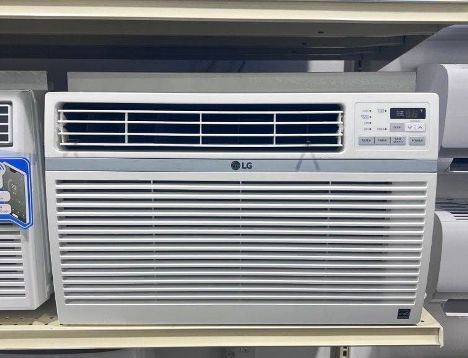
Like other electronics from LG (Life’s Good), their PuriCare line of dehumidifiers is really good. However, like all dehumidifiers, they are prone to failure.
Dehumidifiers draw air inside through the grille, which is the front part that is ventilated with many small holes.
If you neglect cleaning the dehumidifier regularly, the holes might become clogged with hair, dust, oil and other debris.
This means the airflow is affected. If the ventilation is blocked, the unit might go on and off, or it might refuse to work altogether.
Solution: Check whether the unit is placed with the ventilated side facing an open space. If it is facing the wall or furniture, make sure there is a distance of at least one foot. Also make sure the dehumidifier is clean and there’s no grease or hair build-up blocking the airflow. You can use an air compressor with the right tip to blow any debris out.
13. Dehumidifier keeps shutting off because it’s too old
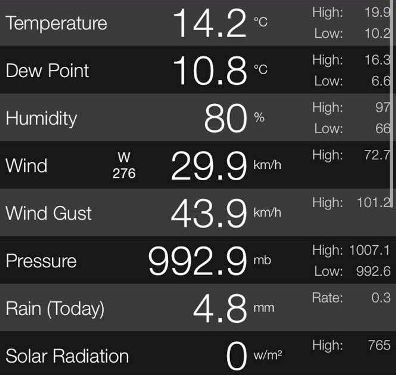
Aging, for living and non living things is inevitable. Therefore, there comes a time when you need to replace your dehumidifier.
If you have repaired it a few times and it has seen a good number of years, say, 5 to 10, well, retire it.
Most appliances come with what is referred to as planned expiration date or planned obsolescence.
Anyway, even without such, you cannot expect your dehumidifier to run forever.
Do your math … if the cost of repairs that you need to do and the inconvenience is close to what you would pay for another unit, just order a new one.
Do dehumidifiers turn off automatically?
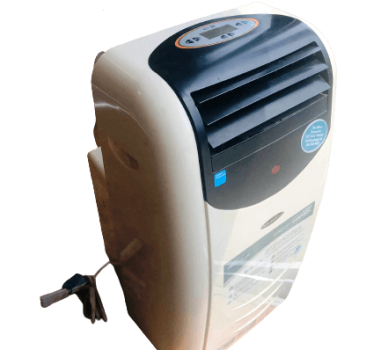
Modern units will shut off automatically when these three things happen:
- The dehumidifier bucket becomes full and needs to be emptied
- The set humidity level is reached
- If it is a dehumidifier with drain hose, the hose is clogged
If the unit does not switch off automatically when it attains the set humidity level or when the bucket is full, it is faulty and you need to check it.
The humidistat and the humidity sensor enable the unit to work on an autopilot mode of sorts. This way, the unit doesn’t have to run the air very dry when you are not at home to switch it off.
If you set the humidity level too low, the dehumidifier might run continuously for many hours since it must lower the indoor RH level to what you set.
Should a dehumidifier turn on and off?
If you are asking whether a dehumidifier should turn on and off automatically, yes it should. When the humidity rises above the set level, it should turn on automatically and start working.
If the humidity level falls to the set level or the bucket is full, the unit should turn off automatically.
But:
Apart from those two scenarios, this should not happen. It is a common problem with faulty appliances.
For instance, in our post on Pure Enrichment humidifier not working, we saw that it is possible to experience the same thing.
A dehumidifier that turns on and off is definitely faulty. One of the culprits could be low levels of refrigerant.
While refrigerant level should not go down, leaks from worn out rubber seals and a burst pipe could cause the unit to go on and off.
A faulty compressor can also make the unit go on and off. If you have ruled everything else, check the compressor.
With an overload switch, it will turn off if it overheats for working too hard, when there is frost on the coils.
If the unit is turning on and off without achieving its task, check it thoroughly for faults.
How to tell if dehumidifier is working
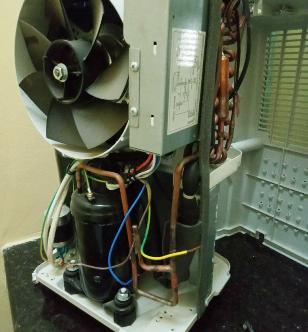
If you have just bought your first dehumidifier, well, you might not know whether it is working for sure.
Actually, people ask: how do I know whether my dehumidifier is working?
There are some ways to find out, and here are the simplest of them:
- Humidifier noise – at high fan speed, dehumidifiers are noisier
- It is blowing dry air out – place your hand against the grille. If you feel warm air coming out, it’s working
- Use a hygrometer to test the humidity level. If it has dipped, the dehumidifier is working.
- If the bucket is getting full, then it is working
- If you are using it to dry laundry and it does that, it is working
Dehumidifier turns on by itself – Is it bad
Out of curiosity, you might ask whether something is wrong when the dehumidifier turns on by itself.
Well, as it turns out, not really. It does not have to be bad.
In fact, humidifiers should go on by themselves. The humidity sensor sends information to the circuit board, on the need to lower the humidity level.
After getting this signal from the sensor, the control board sends the same to the fan motor and it starts working the fans.
The unit starts to draw moist air over the evaporator pad and condenser coils, where the vapor condenses and drips to the collecting pan.
When you are traveling or going to work and you live in a high humidity place such as Florida, you want a dehumidifier that turns on by itself. That way, you just set the timer and at the right time, it turns on and starts lowering humidity.
For the dehumidifier to turn on automatically, it must have the following:
- Humidistat – This signals when there is need to adjust the humidity to the set level, so the control board turns the unit on by itself
- A timer – this is what you use to set the time that the dehumidifier should go on, say, from 10 PM to 7.00AM
Final Thoughts: Dehumidifier stops running after a few minutes
If the dehumidifier turns off by itself, many things could be wrong, as you have seen here. Follow the user instructions of your unit.
That way, if something needs repair or replacing, you can do it in good time.
Check the warranty. Some dehumidifiers can have manufacturing defects. In that case, you will need to
If the dehumidifier stops running after a few minutes and there doesn’t seem to be anything wrong with it, maybe it’s over. If you have had it for more than five years, perhaps it is time to get a new one.
